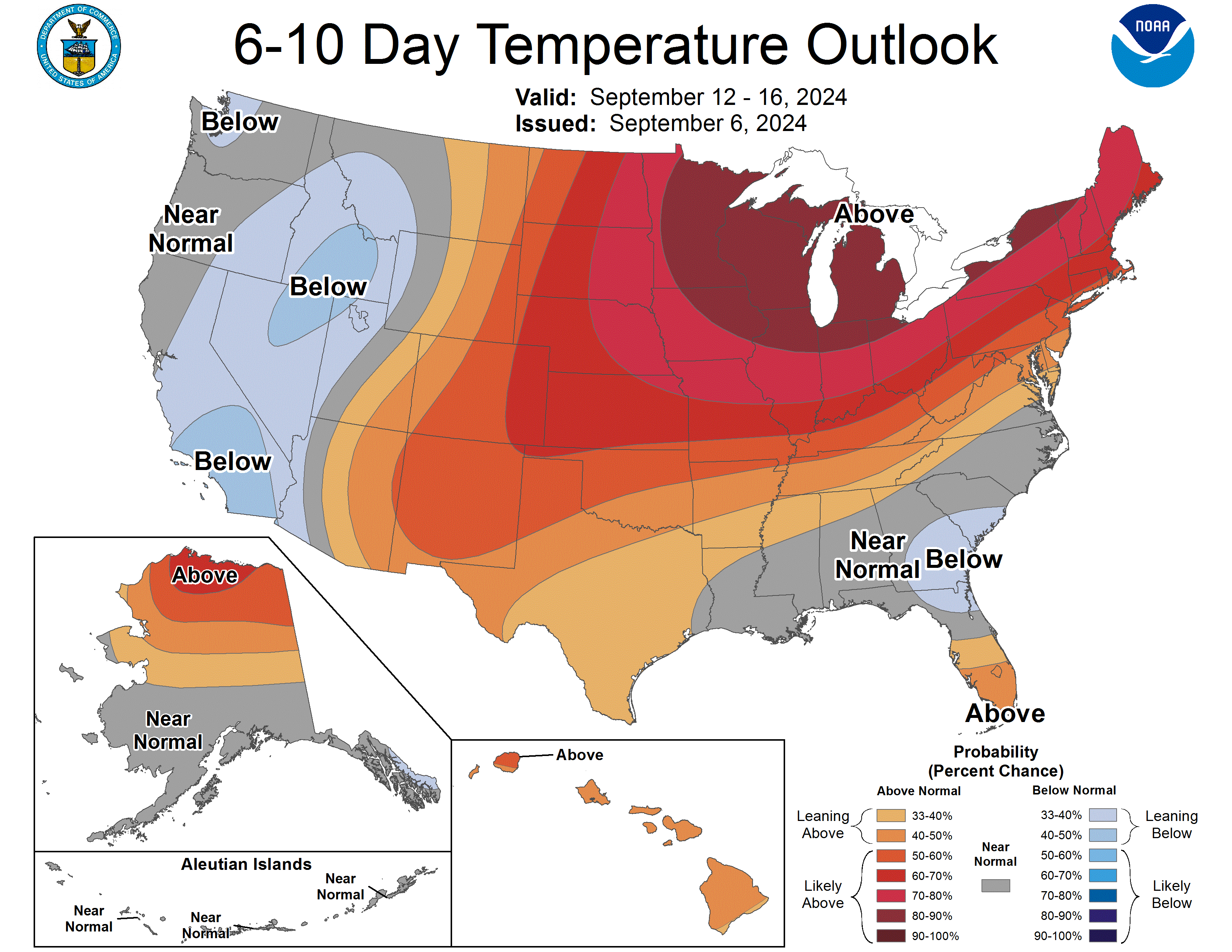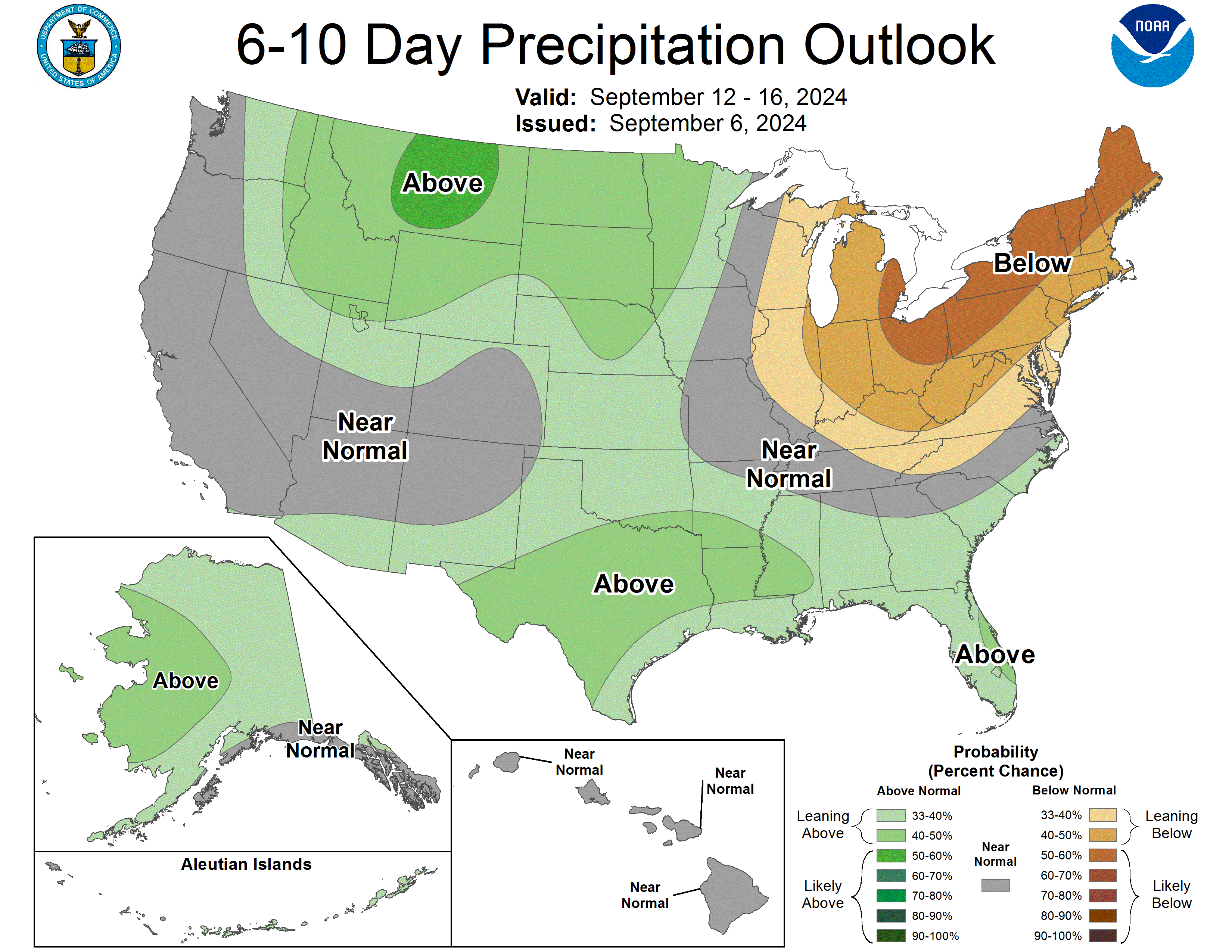Weekly Market Update 9-6-24
Here is your weekly market update from the Garden City Co-op Grain Origination Team.
Trivia
-
What planet is known as the “Blue Planet"?
-
How many continents are there?
Answers at the bottom.
Market News
MISSISSIPPI WATER LEVEL: The ongoing drought in the central US is causing the Mississippi River to shrink, leading to a significant increase in barge rates and posing a threat to the transportation of various goods such as corn and gasoline. The dry conditions in the Ohio River basin, which supplies water to the Mississippi, have increased the already low water levels in the larger river. While it's typical for the Mississippi to experience lower water levels at this time of year, the current levels are concerning enough to force the barge and navigation industry to be cautious about the amount of load they put on barges to avoid ships running aground. Barge rates between Minneapolis-St. Paul and St. Louis saw a 19% increase to $34.15 per ton, while rates from St. Louis rose by 17% to $24.62 per ton. Lower water levels in the Mississippi River are concerning for US soy and grain producers, leading to restrictions on barge draft and towing. This highlights the impact of extreme weather on vital waterways. Low water levels on the Amazon in Brazil are also threatening crop shipments. Along with recent railroad snags, including a day-long Canada strike, the retreating water levels on the Mississippi River are serving as an impediment to farmer profitability. This coincides with a projected large 2024 harvest. Shipments of crude oil and petroleum products, such as gasoline and diesel, could also be impacted. However, crude oil transportation via barges and tankers has decreased in the last decade due to the construction of more pipelines. In the previous year, approximately 36,000 barrels of crude oil and petroleum products were transported from the Midwest to the Gulf Coast. This amount is significantly lower than the peak of 80,787 barrels in 2013.
CFTC REPORT: Today’s Commitment of Traders Report showed that managed money was a buyer of commodities across the board, confirming the funds’ roles in the rallies we’ve seen in the last two weeks. Kansas City wheat saw the funds buy 4,765 contracts, bringing their net short to 27,237 contracts. Corn had 65,9697 contracts bought by the funds to bring their net short to 176,211 contracts, while soybeans had 22,455 contracts bought to bring the net short to 154,096 contracts. This data is as of last Tuesday, so we would expect to see more fund short covering reported for this week in the next report.
BLACK SEA: Weather concerns are beginning to emerge in Russia, as excess rains in some areas could threaten the quality of Russian spring wheat. Low tests weights have been reported in some of these areas. Russia’s federal government maintains their overall wheat estimate at 86 MMT. Meanwhile, Ukraine’s Ag Ministry projects their total grain exports to rise to 7.2 MMT in 2024-25, up from 4.9 MMT last year, expecting quality issues in the EU to reduce their exportable supplies. Headlines indicate that Ukrainian farmers may increase their wheat acres due to current drought preventing rapeseed planting. This will be worth keeping an eye on, as the US continues to struggle to be competitive in the world market.
EXPORT INSPECTIONS: A total of 21.2 million bushels of wheat were inspected by the USDA this week; with HRW totaling 5.8 million bushels and HRS wheat totaling 6.5 million bushels. The majority of this week’s HRW will find it’s home in Mexico, followed by Nicaragua and Guatemala. Soft red wheat inspections totaled 4.0 million bushels this week; with the leading exporters being Colombia and Peru, taking a combined 2.9 million bushels of the inspected totals. White wheat inspections this week were reported at 4.7 million bushels, while durum wheat export inspections totaled 0.3 million bushels. Corn finally is meeting the year-to-date inspection requirement relative to the seasonal pace at 38.0 million bushels inspected for the export market. Coming in as a close second at the top of the inspection board, soybeans totaled 18.2 million bushels this week, with 7.1 million bushels traveling to China and 3.8 million bushels making their way to Mexico. Milo totaled 4.8 million bushels of inspected crop this week, with all bushels being exported to China as their final destination.
EXPORT SALES: With fall harvest ramping up around the nation, N/C corn sales were reported at 71.7 million bushels this week and N/C soybean sales were reported at 60.9 million bushels. Following a slight increase in the wheat market compared to the week’s prior, O/C wheat sales totaled 12.5 million bushels. Old crop milo sales were elevated this week compared to last week; coming in at 2.4 million bushels and N/C sales recorded at 9.9 million bushels. Soybean sales remain 3% below the marketing year-to-date sales relative to the seasonal pace needed to reach USDA targets, while all other commodities tend to remain on track or slightly above USDA targets.
WEATHER: A relatively uneventful weather forecast for the next week; your Friday forecast appears sunny and mostly clear, with a high temperature near 82°F, wind coming out of the northeast around 6 mph, shifting to east/southeaster later in the day. This weekend is shaping up to be sunny with high temperatures in the mid- to upper-80s. Next week is looking to be sunny with highs again around the upper-80s to low-90s. The evening hours are predicted to cool off with lows around 60°F.
|
|
|
Trivia Answers
- Earth
- 7

